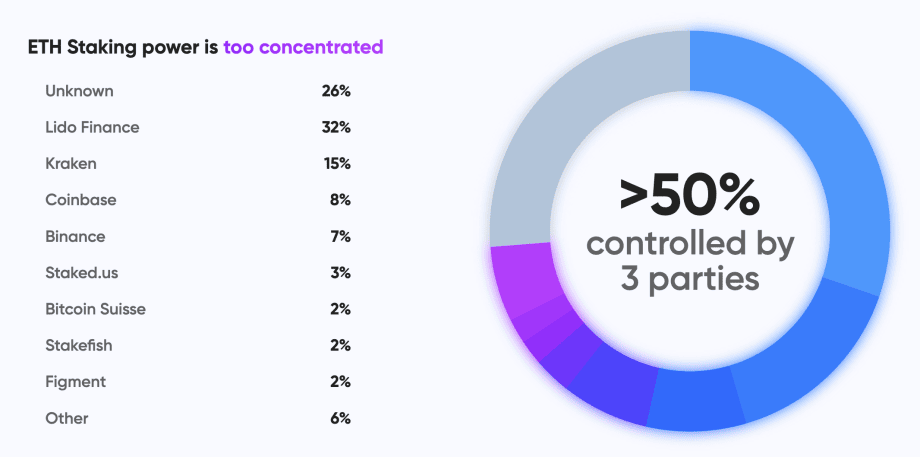Ethereum, crypto’s second largest project, has been running on the proof-of-stake consensus mechanism for a good year. For the long-awaited merge on September 15, 2022, there was not only a lot of cheering, but also a lot of criticism from the crypto community. Because staking through providers like Lido-Finance opens the door to centralization and censorship, as it was said at the time. And indeed: a look at today’s numbers seems to confirm these fears. Only four entities hold more than 50 percent of the total Ether staked, like Data from Dune Analytics show. Three of them are centralized crypto exchanges.
This may be one of the reasons why not even Ethereum’s founding father, Vitalik Buterin, is committed to staking. According to his own information, he has only provided “a small portion” of his ETH to maintain network security. According to him, a problem is the still high complexity of the staking procedure, which drives ordinary stakers to centralized providers. These offer users easier handling. However, this comes at a price. A recently launched staking protocol wants to shake up the sector with the help of Ethereum’s latest innovation. Can this work?
Read more with BTC-ECHO Plus+
-
Unlimited access to Plus+ content -
Exclusive articles and analysis -
Across devices (web & app) -
Much less advertising
You can read these and many other articles with BTC-ECHO Plus+
